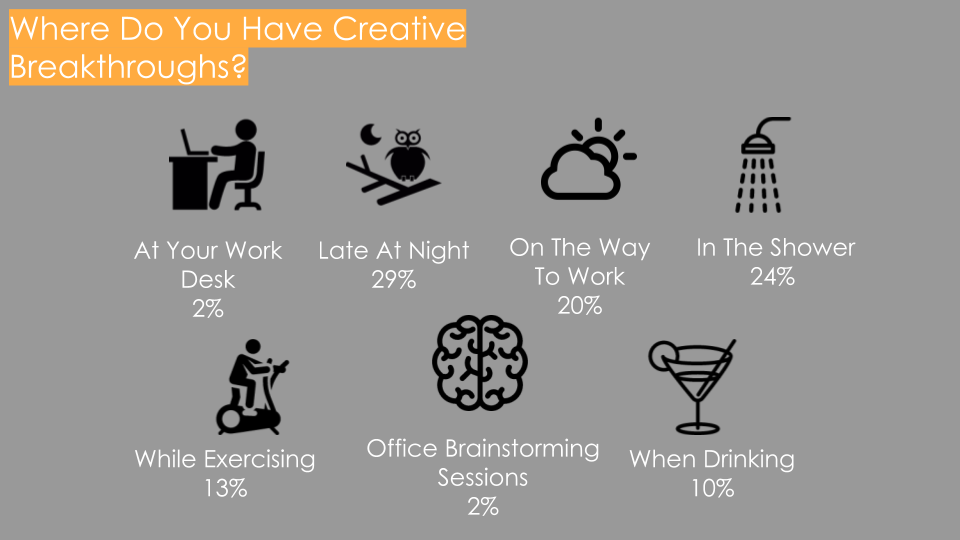From ten to eleven, have breakfast for seven; From eleven to noon, think you’ve come too soon; From twelve to one, think what’s to be done; From one to two, find nothing to do; From two to three, think it will be; A very great bore to stay till four.
– A Day At The Office – Thomas Love Peacock, published in 1852
Nearly 10 years ago, Professor Gloria Mark of the University of California conducted a study into workplace interruptions.
Observers literally followed people around all day and timed every event that happened in the office.
What they found is that the average amount of time that people spent on any single event before being interrupted – was just three minutes. And it took on average 23 minutes for the person to regain their focus.
More importantly, after only 20 minutes of interrupted performance people reported significantly higher stress, frustration, workload, effort, and pressure.

The office is the biggest inefficiency tax that organisations layer over themselves.
They cost huge amounts to procure and maintain, they become an all too convenient base for meetings (the next biggest inefficiency tax), and they set a precedent for the expected hours that people are meant to work.
Offices promote lengthy commuting which has consequences for both the environment and our own mental health. A recent study found that just a 20-minute increase in commute time is equivalent to getting a 19% pay cut for job satisfaction.
Most importantly – and this is the focus of my piece – they presume that there is a unique formula for productivity or creativity.
There isn’t.
One of the reasons is that we all sleep differently – and our internal clock shapes our energy levels, ability to focus, and creativity throughout the day.
This is known as our circadian rhythm and it has a profound effect on our creativity. It doesn’t work how you’d expect – for instance many morning people have more insights in the evening with night owls having their breakthroughs in the morning.
Each day on average we take a few hours to reach peak performance – at around 10:30am. Soon after lunch those levels start to decline before hitting a low point around 3pm. The “very great bore to stay still until four” that Peacock wrote about – over 150 years ago – has gone largely unaddressed.
Our second performance peak, at around 6pm, is reached after most offices have closed.
As a result, very few of us spend time in a state of flow. Flow, a state of consciousness where we feel our best and perform our best, is the most desirable work state on earth, but it’s also the most elusive. According to Steven Kotler , the average person spends less than 5% of their day in flow. If you could increase that to 15%, overall workplace productivity would double.
That’s why at Bromford we have no specific start or finishing time. As Philippa Jones writes , we need a radical review of the purpose of offices and that means having to think very differently about what it means to “go to work”.

Acceptance of the need to reimagine the world of work isn’t everywhere though.
Last week I badly needed to focus to hit a deadline. Focus comes to me not from sitting in silence but from short 30-minute periods of concentration accompanied by music, and punctuated every half an hour by rapid pacing, a quick video game or Twitter catch up.
Interestingly – it was commented on, fairly negatively, by a colleague, even though it was having no impact at all on their work.
That’s an entirely normal response for people – because it doesn’t look like the world they are used to.
- Sitting at a desk doing emails looks like work.
- Playing Mario and shouting song requests at a virtual assistant – doesn’t.
It’s incredibly difficult for most people to imagine a different future, which is why getting people to agree on what workspaces should look like results in the average of everyone.
New buildings need to be designed for networks – and organised to maximise a meeting of minds.
At Pixar for example, Steve Jobs created environmental conditions that promoted novelty, unpredictability, and complexity in the environment. As a result of this flow, creativity and productivity increased.
Traditional office buildings were built to isolate people, so forcing people to meet each other leads to different operating systems.
The challenge is that this won’t work for everyone. Most of us don’t work at Pixar and have to balance the needs of colleagues with very different working styles.
A good place to start would be better understanding our people.
Your next conversation with your team could be about how much sleep they are getting, when they feel they are most creative, and what the optimal conditions are to get their full concentration.
A world of work that’s in tune with your own circadian rhythms sounds like a more productive, more creative and infinitely happier place.

Leave a comment